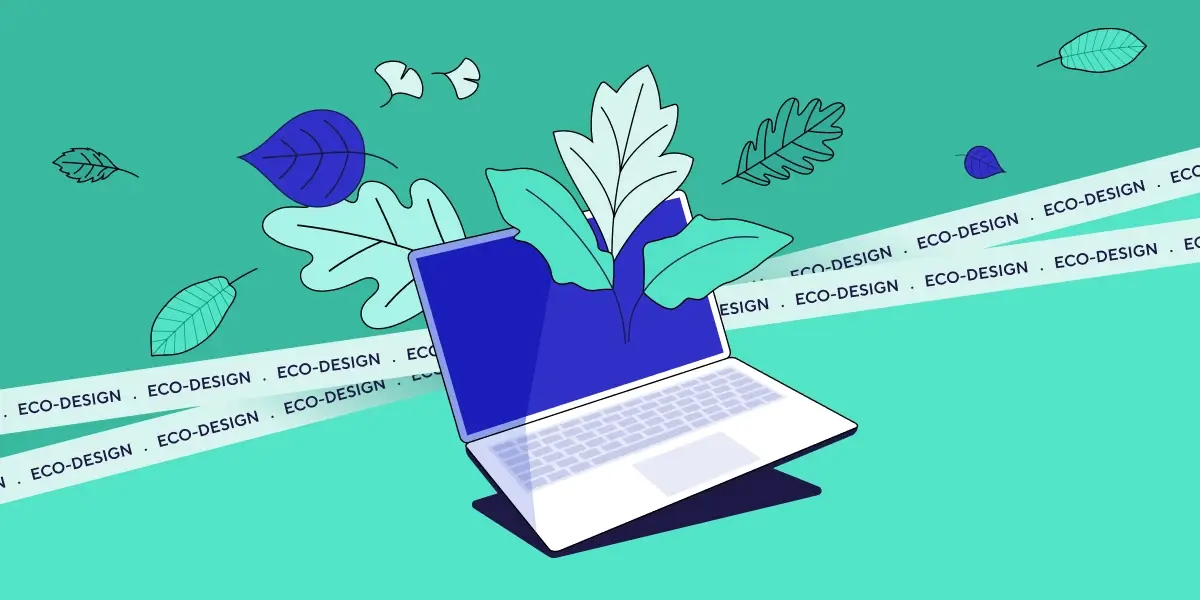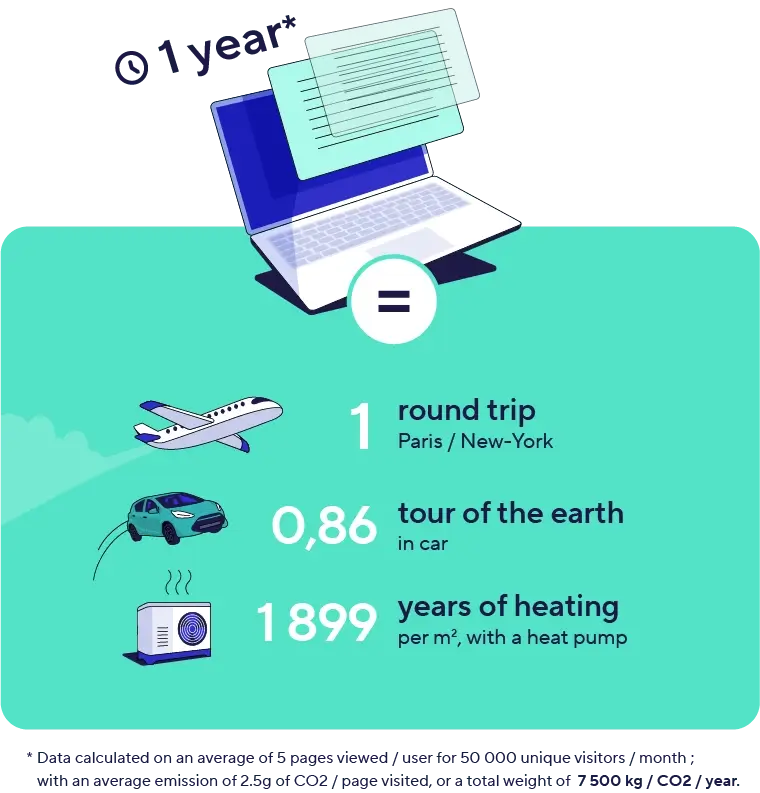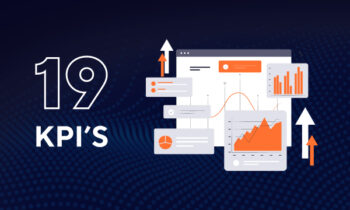Eco-design: good for the planet and good for your performance

The web seems dematerialized, yet… the web pollutes!
Since 1995, the average web page size has increased from 14 KB to 2,566 KB, making it 183 times heavier.
Amid growing environmental concerns and the rising impact of digital technology, eco-design for the web emerges as an innovative and essential approach. It aims to reduce websites’ ecological footprint while enhancing their performance. This article explores the fundamental principles, benefits, and best practices of this approach.

Why is web eco-design crucial?
The digital sector accounts for about 4% of global greenhouse gas emissions, a figure that continues to grow. Websites contribute to this footprint through energy consumption related to servers, data transfers, and user devices.
According to GreenIT.fr, a poorly optimized site can emit up to 4.61 g of CO₂ per page view, especially when it includes heavy videos, uncompressed scripts, or unoptimized images. Meanwhile, the EcoIndex tool estimates that a “standard” website emits an average of 2.5 g of CO₂ per page view, a figure that can increase depending on hosting quality or data management
An eco-designed website can significantly reduce emissions, averaging between 1.2 g and 1.5 g of CO₂ per page view through practices like image compression and query optimization. With advanced optimization, it’s possible to go below 1 g of CO₂, although this remains challenging for most sites.

Eco-design and performance: an inseparable duo
Contrary to popular belief, eco-design does not compromise performance—quite the opposite. A site optimized to reduce its ecological footprint is often faster and more efficient. Here’s why:
Reduced HTTP requests: Every page element (image, script, CSS) generates a request. Minimizing the number of elements to load reduces loading time.
Optimized file sizes: Compressed images, minified files, and the removal of unnecessary resources decrease bandwidth usage.
Efficient coding: Practices like simplifying HTML, eliminating non-essential scripts, and compressing JavaScript and CSS files enhance overall speed.
Essential-focused design: A clean interface avoids unnecessary resources, ensuring smooth navigation.

Best practices for eco-design
1. Choose green hosting
Hosting plays a key role in a website’s ecological impact. Data centers often rely on fossil fuels. Opting for a host that uses renewable energy or offsets its emissions significantly reduces the carbon footprint.
2. Optimize media
Use modern formats like WebP for images.
Compress multimedia files to reduce their size.
Limit the number of videos or use adaptive playback options (avoid autoplay)..
3. Adopt a minimalist design (but not simplistic)
A clear and functional design minimizes unnecessary graphic elements. Optimizing UX design, user journeys, and prioritizing features reduces the number of clicks needed to reach the final goal (information search, contact, conversion, etc.).
This benefits both user experience and loading time and energy performance.
4. Reduce scripts and plugins
Websites overloaded with scripts and third-party plugins consume more resources. Avoid unnecessary modules and centralize features in lighter solutions.
5. Prioritize mobile-first
With most users accessing the web via smartphones, designing mobile-optimized sites reduces resource usage.
Mobile-first sites offer a triple advantage: better performance, lower environmental impact, and significantly higher conversion rates.

Assessing the benefits of eco-design
The benefits of eco-design are numerous:
-
Environmental
Environmental
Consuming fewer resources leads to a reduction in associated CO₂ emissions.
-
Economic
Economic
A lighter site requires less bandwidth and lowers hosting costs.
-
CRO
CRO
Faster loading times improve conversion rates and enhance user retention.
-
SEO
SEO
Search engines favor fast and high-performing sites, improving their ranking in search results and increasing online visibility.
-
CSR Strategy
CSR Strategy
Companies adopting these practices enhance their brand image as responsible and committed.

Together towards a more responsible web
Adopting eco-design is a proactive and committed approach. It requires a paradigm shift, where the focus is not only on design or features but on the overall impact. Digital professionals play a central role in this transition.
In conclusion, eco-designing a website is not just a response to an environmental emergency; it is also an investment in the quality and sustainability of your digital environments.
Ready to embrace a more responsible web ?
DATASOLUTION supports its clients in transitioning to more sustainable solutions. Together, we design the digital platforms of tomorrow by integrating environmental challenges at the core of today’s digital strategies.





Eco-design is not just an ethical approach; it also enhances overall site performance by reducing carbon footprint while optimizing user experience and loading speed.
,